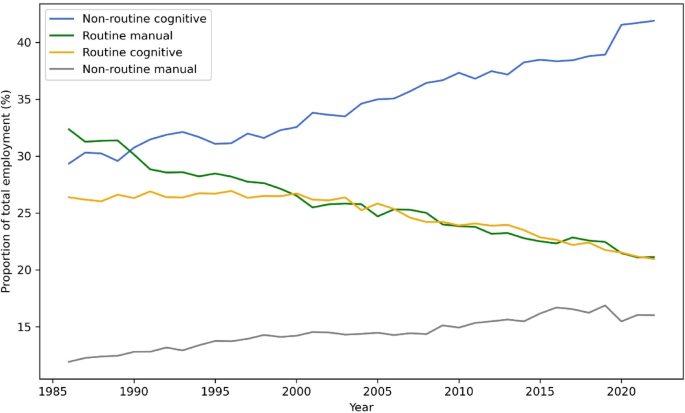AI Expansion Widens Economic and Social Inequality
AI technology is widening economic and social divides, benefiting tech giants while threatening job displacement and social unrest.

Behind the Curtain: The Ever-Growing AI Inequality Gap
The rapid expansion of artificial intelligence (AI) technology is creating an unprecedented economic and social divide, often referred to as the AI inequality gap. This gap primarily separates the AI "haves"—major tech companies, investors, and highly skilled employees—from ordinary workers and the broader population. As AI capabilities grow exponentially, so too does the disparity in wealth, job opportunities, and political influence tied to this transformative technology.
The Growing Divide: Who Benefits and Who Does Not?
The AI economy is dominated by a handful of tech giants such as Google, Microsoft, Amazon, Meta, and emerging AI-focused startups like Anthropic. These companies invest billions of dollars in AI research and development, akin to a "modern Manhattan Project," aimed at surpassing global competitors, especially China. This leads to vast profits and wealth accumulation concentrated among AI executives, investors, and highly skilled engineers. According to recent analyses, roughly 320,000 AI-related jobs were created in the U.S. alone in 2024, many offering salaries exceeding $120,000 annually.
Meanwhile, the broader American workforce faces starkly different realities. Entry-level and routine jobs are increasingly vulnerable to automation, with experts like Anthropic CEO Dario Amodei warning that half of all entry-level white-collar jobs could disappear within five years. This could drive unemployment rates up to 20%, disproportionately impacting middle- and low-income workers. The U.S. government has been largely inactive or ineffective in preparing for these economic shocks, even as AI adoption accelerates.
Job Losses vs. Job Creation: A Complex Picture
Globally, AI is projected to displace about 85 million jobs by 2025, yet it is also expected to create around 97 million new jobs in fields like AI development, cybersecurity, data analytics, and AI ethics. However, this transformation hinges on the workforce's ability to reskill. Currently, only about 36% of displaced workers have successfully transitioned into new AI-influenced roles.
New AI-adjacent roles such as prompt engineers, model validators, and AI ethics reviewers are emerging rapidly but require specialized skills that many workers lack. Companies like Amazon and IBM have invested over $1.2 billion in reskilling programs, but these efforts are insufficient to close the widening gap.
Public Perception and Political Implications
Public opinion reflects deep concerns about AI’s societal impact. A 2025 Pew Research Center survey across 25 countries found that 34% of adults are more concerned than excited about AI’s growing presence in daily life, with even higher concern in countries like the U.S., Italy, and Australia. In the U.S., 63% of people worry AI will replace their jobs within the next decade.
This growing anxiety is influencing political discourse. Senator Bernie Sanders has criticized Congress for ignoring the implications of AI-driven economic disruption, warning that AI could require a new social contract, including possibly paying workers not to work. Elon Musk, despite his optimism about AI, also acknowledges the potential for massive job displacement.
Economic and Ethical Challenges
The AI inequality gap also raises significant ethical and regulatory challenges. Trust in both government and corporations to manage AI responsibly remains low: about 62% of Americans lack confidence in AI regulation, and 70% distrust companies to use AI ethically. Moreover, AI systems consume vast resources, with training large models requiring millions of liters of water, contributing to environmental concerns.
From an economic perspective, AI is projected to drive 14% global GDP growth by 2025, generating trillions in value across industries. Yet this growth benefits a narrow slice of society, exacerbating existing inequalities. Unless policies prioritize inclusive workforce development, ethical AI use, and environmental sustainability, the AI revolution risks entrenching social divides rather than alleviating them.
Visualizing the Gap
Relevant images illustrating this topic include:
- Logos and headquarters photos of dominant AI companies like Google, Microsoft, and Anthropic, highlighting their central role in AI development.
- Visual data charts showing job displacement versus job creation in AI sectors.
- Infographics depicting public concern about AI from global surveys.
- Portraits of key figures such as Dario Amodei and Bernie Sanders, who articulate the risks and political stakes.
- Images of AI-powered automation in workplaces contrasted with scenes of displaced or upskilling workers.
The ever-growing AI inequality gap is a defining challenge of the 2020s. While AI promises transformative economic benefits, its rewards are currently concentrated in the hands of a few, threatening widespread job displacement and social unrest. Bridging this divide will require urgent, coordinated efforts in education, policy, and ethical governance to ensure AI serves the many, not just the few.



